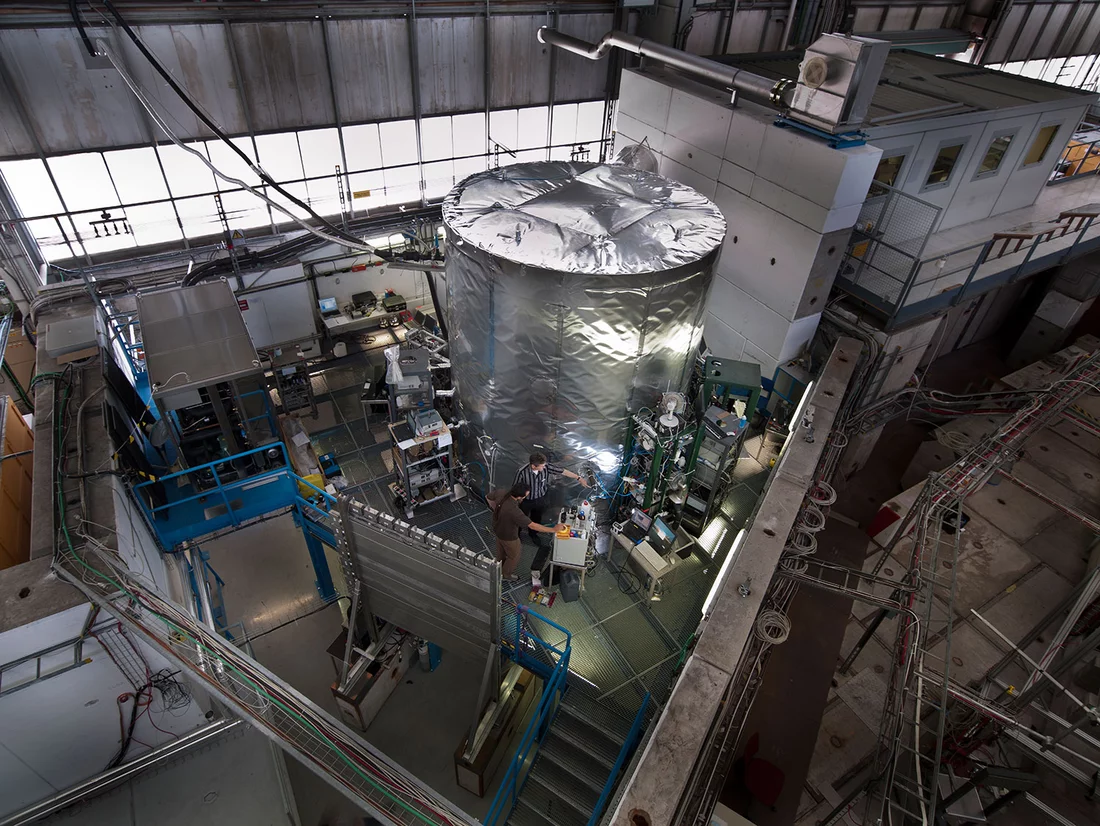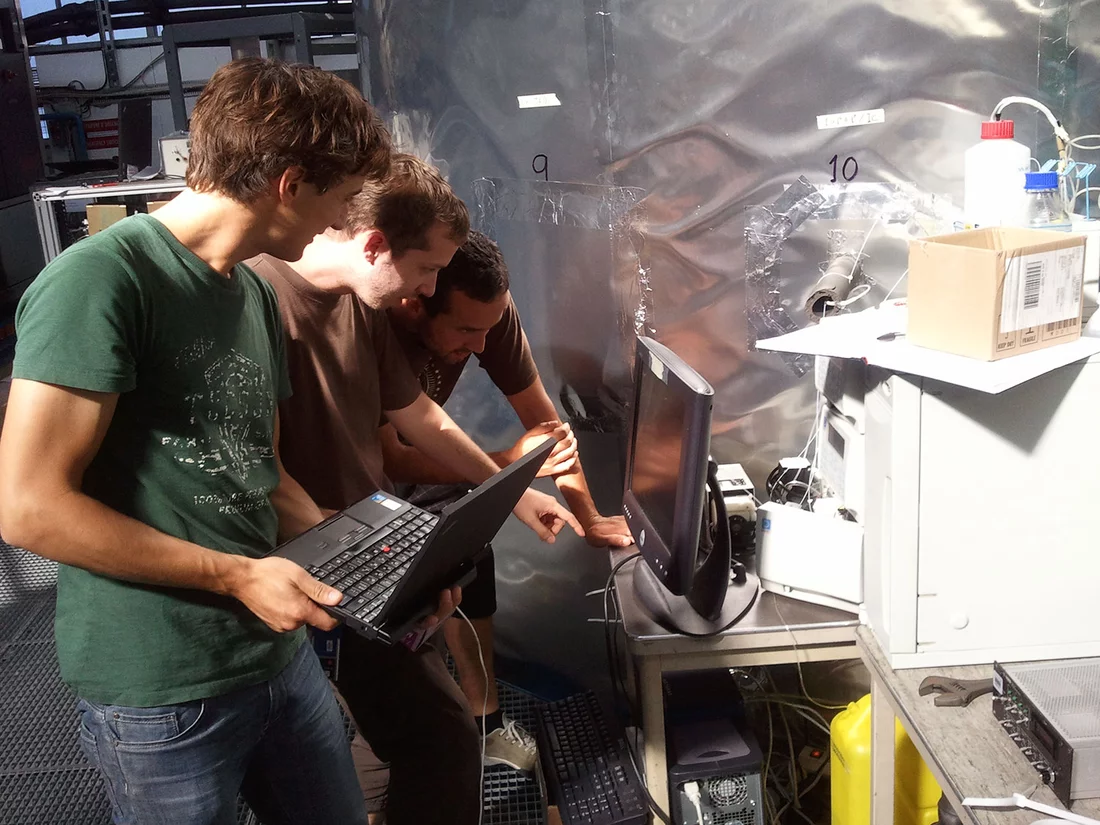Natural and man-made amine emissions could influence the formation of particles in the atmosphere – and thus our climate. Thanks to new measuring methods with unprecedented accuracy, the formation of particles from amines and sulphuric acid has been described at molecular level. Scientists from the Paul Scherrer Institute (PSI) made an important contribution with their highly sensitive amine measurements and determination of the growth of the newly formed particles. The researchers report on the results in an advance online publication of the journal Nature.
The formation of new particles in the atmosphere, or nucleation, as scientists call it, still holds many mysteries, one of which has just been uncovered thanks to new measurements at the CLOUD experiment at CERN. CLOUD (Cosmics Leaving OUtdoor Droplets) has been examining the influence of cosmic radiation on the formation of these particles since 2006, with eighteen institutes from nine countries are collaborating on the project. PSI scientists are also heavily involved and key components of the construction of the climatic chamber were developed at the institute.
Water vapour cannot automatically condense into water droplets that form clouds; it needs help from so-called aerosols – tiny particles that float in the air, upon which water molecules accumulate in layers. One cubic centimetre of air contains between 10 and 1,000 of these cloud condensation nuclei. Their presence is known to have a major impact on the climate: on the one hand, they are involved in cloud formation; on the other hand, they reflect solar energy back into space; both counteract global warming. How these aerosols are formed, however, is still largely a mystery: “Which contaminants play a major role in nucleation where?” says Urs Baltensperger, Head of the Laboratory of Atmospheric Chemistry at the Paul Scherrer Institute and one of CLOUD’s scientific coordinators, explaining the challenge the scientists face.
Amines play unexpectedly important role
For the first time, just how important the presence of miniscule concentrations of the amine substance group is for aerosol formation has now been proved in the CLOUD climatic chamber. Amines are closely related to ammonia. “We released amines into the air in such small concentrations that they could not have been detected using conventional methods,” reports Baltensperger. “To do so, in a first step we developed at PSI a sufficiently sensitive measuring technique for CLOUD. Only then could we begin the two-year measurements, the results of which have now been published in Nature. Even at a concentration of one amine molecule per trillion air molecules, nucleation could be observed under natural concentrations of sulphuric acid. Such small amounts are found in many places in the atmosphere.”
It is now clear that aerosol formation especially rises dramatically with very low increases in concentration. Such low trace amounts could not be detected in the past and it was mistakenly assumed that there was a linear increase.
Amines are known to combine with sulphuric acid to form aerosols. The fact that the increase is less pronounced at higher concentrations is also linked to the fact that there are often not enough sulphuric acid molecules in the atmosphere for the amine to bind to. The particle generation rate now discovered is a thousand times higher than that of ammonia and thus just as high as the formation rates actually observed in the real atmosphere. The impact of cosmic radiation on the particle generation speed, however, was minimal.
The secret to success
According to Baltensperger, one key element of the measurements’ success is the fact that, “In the CLOUD experiment, for the first time such clean and precisely controlled conditions can be produced in the air of a climatic chamber that the influence of even minimal factors on aerosol formation can be detected. Nowhere else on Earth have such exact measurements be achieved. Until now, even with the utmost diligence small impurities have always distorted the measurement results.” Another success factor was the development of even more sensitive measuring methods to determine the concentration of the gases and the composition of the particles being formed. Here, the important thing was that the team from the Paul Scherrer Institute even managed to detect such extremely low concentrations of amines accurately at all.
Climate model can become more accurate A more in-depth understanding of aerosol formation is essential for climate models. As already mentioned, on the one hand the aerosols reflect solar radiation back into space; on the other hand, they play a role in the formation of clouds.
Moreover, the finer the cloud droplets are, the “denser” the cloud becomes. This is the case, for instance, if there are a great many aerosols upon which cloud droplets can form, but only very little water in the air. Then the individual drops remain smaller and the cloud seems “whiter” and reflects the sunlight more strongly. Furthermore, these clouds do not shed their rain as quickly and thus reflect the solar energy back into space for longer. If the Earth did not have any cloud cover at any given moment, every square metre of its surface would receive an average of twenty watts of additional thermal energy. Consequently, aerosols counter the warming of the Earth’s atmosphere.
It was already no secret that around half of aerosols are of a natural origin. Until now, however, our knowledge of the nucleation mechanism was merely rudimentary. The more we know about aerosol formation, the more accurate climate models can become.
Text: Alexandra von Ascheraden
About PSI
The Paul Scherrer Institute develops, builds and operates large, complex research facilities, and makes them available to the national and international research community. The Institute's own key research priorities are in the investigation of matter and material, energy and the environment; and human health. PSI is Switzerland's largest research institution, with 1500 members of staff and an annual budget of approximately 300 million CHF.
Additional Information
CERN's press release: CERN’s CLOUD experiment shines new light on climate changeBackground information from CERN (pdf): CLOUD Background Notes
Contact
Prof. Dr Urs Baltensperger, Head of the Laboratory of Atmospheric Chemistry,Paul Scherrer Institute,
Tel.: +41 56 310 24 08, email: urs.baltensperger@psi.ch [German, English]
Original Publication
Molecular understanding of sulphuric acid - amine particle nucleation in the atmosphereAlmeida et al. (CLOUD collaboration)
Nature , online pre-release 6 October 2013
DOI: DOI 10.1038/nature12663


